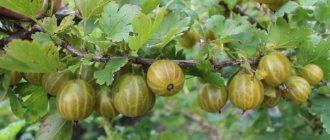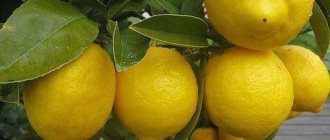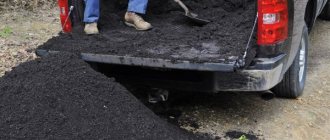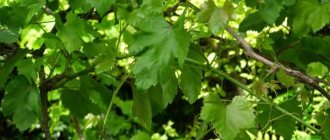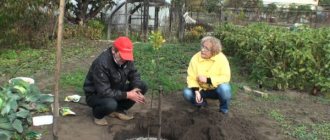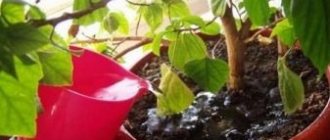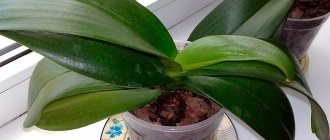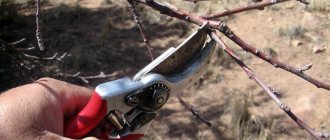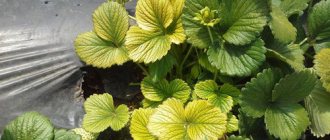Apricots are a fruit that can be grown without any special gardening skills. Trees are easy to maintain in almost any climate. Not only do they bloom beautifully and bear fruit in large quantities, they are also good in the autumn. During the summer, apricot trees provide excellent shade.
The tree requires minimal maintenance by thinning the branches. Otherwise, you will simply end up with a very large harvest of small fruits that are not particularly suitable for consumption or preservation. The fewer fruits set on the tree, the larger they will be.
There is nothing better than eating a fresh, ripe apricot straight from the tree. Gardeners invest years in achieving this key point. One of the small disadvantages of growing such a tree is its long growth. You will also have to deal with diseases and pests that can prevent the fruit from fully ripening.
In this article we will look at the situation, why apricot does not bear fruit, and what to do in this case. There are many types of pests that can be present on apricot trees, but most are easy to control without the use of potentially harmful insecticides.
Pollination
First of all, if you have an apricot tree that does not produce any fruit, then it is important to understand how many there are in your garden: one or many.
If you have a really lone non-fruiting tree, it could very well be due to poor pollination. Make sure the tree is located in an area that is conducive to this process. If you use pesticides, you can easily inadvertently kill the beneficial insects that pollinate your apricot trees. In addition, a very windy or rainy season can interrupt this process at its peak, and the pollen will simply be blown away by unfavorable weather conditions.
Although apricot trees are considered self-sufficient and unpretentious, sometimes it is better to have several trees (located close to each other) for complete and successful pollination. You may even have two different varieties of apricot trees, but in the case of one specimen, such problems may arise. There is nothing you can do here on your own, wait for pollinating insects, plant new trees. Over time, the situation will stabilize.
Improper watering and fertilization
In average weather in the middle zone, apricots are watered four times during the season:
- when the shoots begin to grow, it is usually mid-spring (April);
- when shoot growth is most intense - usually the end of spring (May);
- before fruit ripening - 2-3 weeks;
- in late autumn (moisture-recharging irrigation).
Of course, this schedule needs to be adjusted depending on weather conditions. If the season is cold and wet, apricots do not need additional watering. And if the summer is dry and extremely hot, it won’t hurt to “water” the tree generously several more times, in addition to the above.
Water apricots in the morning or evening when there is no direct sun. Make sure that the water does not stagnate at the roots and that the soil is sufficiently loose. Remember about the golden mean - both drought and waterlogging (and especially a sharp change in these conditions) are equally harmful to apricots. In the first case, you will get dried out or unformed fruits, and in the second case, the fruits will burst. For one watering, 3-5 year old plants need 5-8 buckets of water, and 7-10 year old and older plants need 12-15 buckets.
Regular fertilization of apricots will also not harm. However, unless necessary, do not get carried away with fertilizing before the tree begins to bear fruit. Typically, trees are fertilized once a year: young ones are more suitable with organic matter (rotted manure diluted with water, humus - about 5 kg per tree), and for adults who have been bearing fruit for a long time - mineral complexes (for example, 800-900 g of superphosphate + 250 g of potassium chloride + 350 -370 g of ammonium nitrate per tree).
Depending on the composition of the soil in your area, the fertilizing scheme and the composition of the applied fertilizers can be adjusted, for example, add peat, lime, etc. every few years.
Also, do not forget to get rid of weeds in a timely manner and remove leaves that have fallen in large quantities so that the roots do not rest under their “cushion.”
Pests
Another problem with an apricot tree not producing fruit could be when the tree has bugs or pests. Sometimes they can eat small fruits (as soon as fruiting begins) or spoil already formed ones, after which they simply fall from the tree while still green.
Pests are usually small and invisible at first glance. If the apricot blossomed normally but there is no ovary, check for parasite larvae or signs of pests to ensure the real reason for the absence of apricots on the trees.
Which apricot variety to choose for planting?
Most varieties of apricot, seedlings of which are sold in stores across the country, are adapted for central Russia. They have high frost resistance, tolerate drought and stagnant water.
We recommend reading the article about the best apricot varieties.
Early apricot varieties
Early varieties, such as Leskore, Alyosha and Melitopolsky early, have a pyramidal or reverse pyramidal crown. Fruits with a slight sourness, weighing from 40 to 55 g. The stone is well separated from the pulp, the fruit is slightly flattened. Suitable for early preservation; these are also the most frost-resistant varieties.
Mid-season varieties
Mid-season varieties - Pogremok, Pineapple, Dessert and others. They have classic frost resistance; the wintering period occurs at an early age when seedlings are transplanted into the ground. The flesh of the fruit is orange-yellow, closer to rich amber. The harvest is good for making jams, compotes and preserves.
Late varieties
Late varieties - Iskra, Favorit, Success and others. These are winter-hardy hybrids with early abundant fruiting. The varieties are self-fertile with a spreading crown and are suitable for winter harvesting, as they have a higher level of sugar content. They are resistant to fungi and pests.
External conditions
A poor environment may be another reason for poor apricot fruiting. If the tree receives too little or too much water during flowering, or while the fruit is ripening, it may result in no ovary after flowering has dropped. Accordingly, there will be no fruit either.
Lack of nutrients such as phosphorus may also be the reason why your apricot tree is not blooming or producing fruit. Monitoring water and fertilizers can help improve this situation.
What factors influence the onset of fruiting?
The beginning of the appearance of the first apricot fruits depends on the type of reproduction:
- Vegetative. When propagating a crop by grafting, you can get the first harvest in 2-3 years. Game trees, blackthorn and even plums are suitable for rootstock. The use of cuttings 1-2 years old, which have already passed the juvenile stage, will significantly speed up the onset of fruiting.
- Seminal. Growing an apricot from a seed is a longer process, in which fruiting begins much later. The first fruits will not appear on seedlings younger than 5 years old, and sometimes flowering occurs only in the 7th year of growth.
Flowering and fruiting may occur later if the root collar is too deep and the planting site is chosen incorrectly.
Parasitic insects
If an apricot does not bear fruit, then in 90% of cases the reasons are parasitic insects. An important point for a successful apricot harvest is the ability to recognize insect pests. These small parasites hide on the undersides of leaves or camouflage themselves as waxy, fluffy or dense bumps on stems, shoots and twigs, feeding directly on plant sap.
Aphids, worms and caterpillars are some of the most common insects on apricot trees. Upon visual inspection, you can easily see signs of their feeding: yellowed and deformed leaves, sticky marks on the shoots and trunk. Spraying trees weekly with horticultural oil works well against all of these slow-moving or stationary pests.
Let's dwell on this problem and consider it in more detail. Below are some of the most common insects that cause apricot tree problems.
Ticks
Ticks are tiny, sometimes even microscopic, arachnids that are difficult to see with the naked eye. Unlike standard caterpillars or aphids, they do not produce a sticky liquid, but can spin fine threads of silk in areas where they actively feed. Mites appear as tiny dots on the undersides of leaves. Eriophila mites cause unusual tumors on fresh twigs or shoots.
You can easily prevent problems caused by mites by spraying the leaves frequently with a water hose during dry weather and by refraining from using broad-spectrum insecticides, which kill mite predators rather than the mites that feed on the plants. Spraying the tree weekly with insecticidal soap also helps.
Leaf caterpillars
No discussion of parasitic insects on apricots would be complete without mentioning the caterpillars, which eat the leaves and damage the fruit early after flowering. Leaf-bearing caterpillars roll apricot leaves onto themselves, forming silk cocoons, where they actually eat the plant. As leafrollers grow, they expand their nests, often moving onto flowers or fruits. Other caterpillars, which also feed on leaves, prefer to attach themselves using a sticky strand on the bottom of the leaf.
The best control when caterpillars are widespread is Bacillus thuringiensis. This special bacteria-derived poison will not stay on the leaves for too long (it washes off easily with water), so it should be reapplied every two or three days until all the caterpillar eggs have hatched and the larvae are still feeding.
Reasons why apricot does not bear fruit
The absence of fruits has a number of reasons.
Soil and place of growth
The tree is planted in a place unfavorable for its development. Apricot loves to grow in the garden in lighted and warm areas, protected from gusts of wind.
The soil should be loamy and neutral; it does not like acidic soils. But even proper planting of the plant does not bring harvest.
Improper care
The plant is especially sensitive to care in the first years of planting. Gardeners know that in order for an apricot to feel comfortable and bear fruit, it is necessary to fulfill a number of requirements.
The plant needs regular watering; it does not tolerate excessive watering, so it must be properly watered. During hot periods, watering is increased.
Why do apricot fruits fall off? If there is a lack of moisture during the dry period, the plant does not have the strength for further fruit growth and ripening. The fruits fall.
The plant also needs fertilizing, which must be regularly applied to the soil. Various complex fertilizers are suitable to compensate for the lack of various microelements such as potassium, phosphorus, and iron. Feeding must be done wisely; an excess of elements can provoke the shedding of inflorescences.
Pruning is carried out regularly. Old and dry branches should be removed. Damaged shoots are also removed. The plant will need a lot of strength to restore them and it may not be enough to form fruits.

